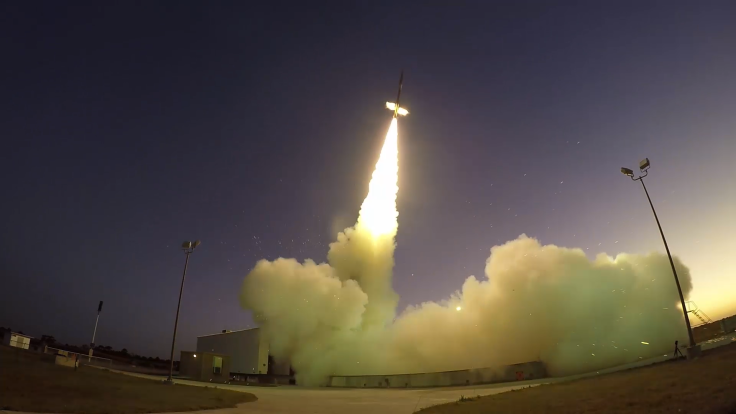NASA Tests Mars 2020 Mission’s Supersonic Parachute To Perfect Red Planet Landing

Given the number of failed attempts to land a spacecraft on the surface of Mars, since the first such endeavor by the former Soviet Union in 1962, NASA is not taking any chances with the Mars 2020 mission. The space agency’s next Martian rover had its landing system tested recently, because as NASA put it, “well-designed advance testing helps.”
NASA, which has had its share of Martian landings gone wrong, is relying on a special parachute to slow down the Mars 2020 rover. The spacecraft will enter the Martian atmosphere at a speed of over 12,000 miles an hour (5.4 kilometers a second) and the parachute will open faster than the speed of sound to do its job.
The supersonic parachute saw its first test on a 58-foot-tall Black Brant IX sounding rocket launched from NASA’s Wallops Flight Facility, Virginia, on Oct. 4, the agency announced Tuesday.
“It is quite a ride. The imagery of our first parachute inflation is almost as breathtaking to behold as it is scientifically significant. For the first time, we get to see what it would look like to be in a spacecraft hurtling towards the Red Planet, unfurling its parachute,” Ian Clark, the test’s technical lead from NASA’s Jet Propulsion Laboratory in Pasadena, California, said in the statement.
The test flight carried its payload to a height of about 32 miles (51 kilometers) above Earth’s surface, in the upper atmosphere. But test conditions were met 42 seconds later, when the rocket had climbed down to an altitude of 26 miles while moving at 1.8 times faster than the sound.
At that point, the Advanced Supersonic Parachute Inflation Research Experiment (ASPIRE) payload — “a bullet-nosed, cylindrical structure holding a supersonic parachute, the parachute's deployment mechanism, and the test's high-definition instrumentation — including cameras — to record data” — was deployed. About 35 minutes later, ASPIRE fell in the Atlantic Ocean about 34 miles from its launch site.
“Everything went according to plan or better than planned. We not only proved that we could get our payload to the correct altitude and velocity conditions to best mimic a parachute deployment in the Martian atmosphere, but as an added bonus, we got to see our parachute in action as well,” Clark said of the test.
The parachute itself was only very slightly different from the one that was used to successfully land NASA’s Mars Science Laboratory on Mars in 2012. However, future tests will use a strengthened parachute and depending on its performance, that version could be used for future Mars missions, including the Mars 2020 mission perhaps. The next ASPIRE test is scheduled to be held in February 2018.
Mars 2020 will look for signs of past life on the red planet, if it ever existed on Mars at all, both by analyzing evidence on location and by collecting drilled samples for their potential return to Earth in the future, where they can be investigated in more detail.
© Copyright IBTimes 2024. All rights reserved.





















